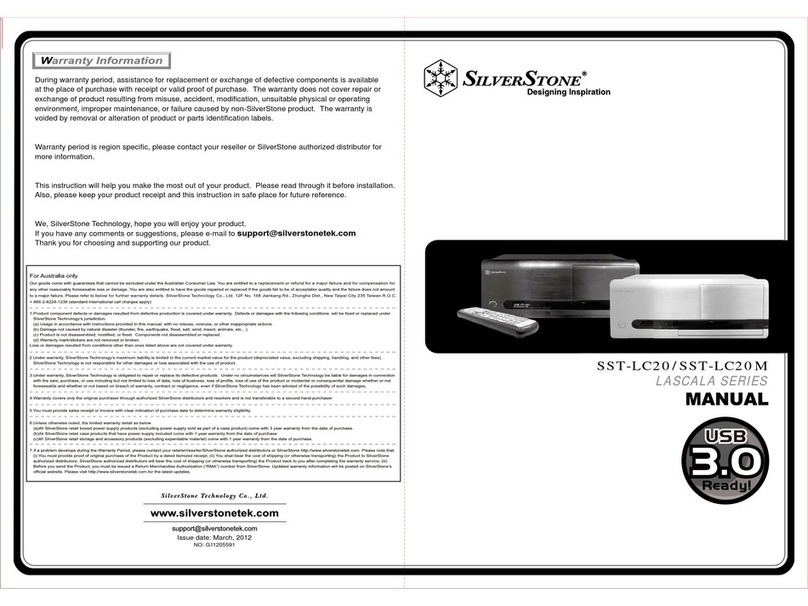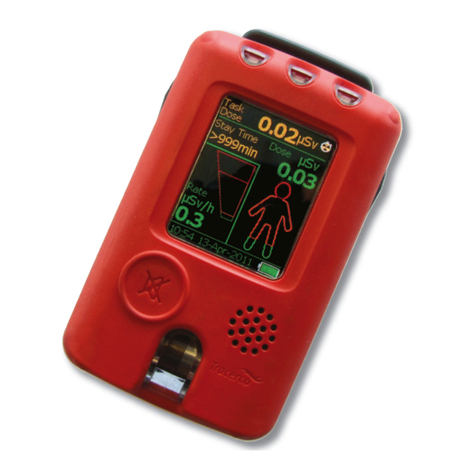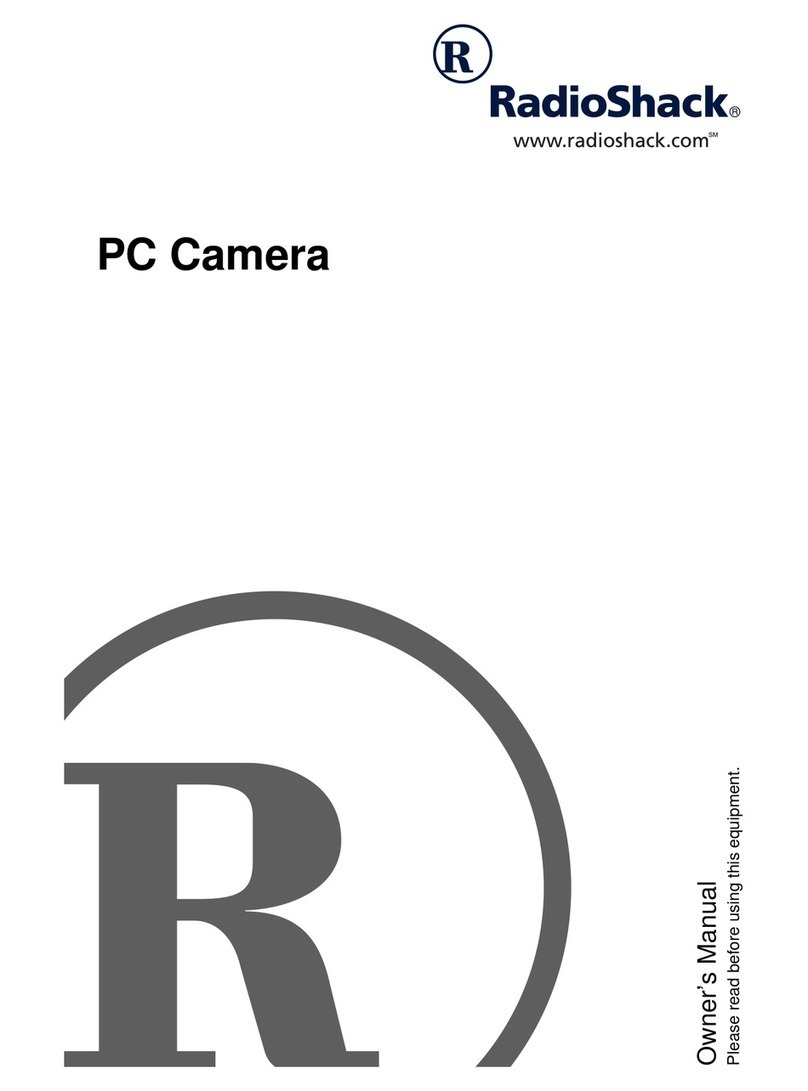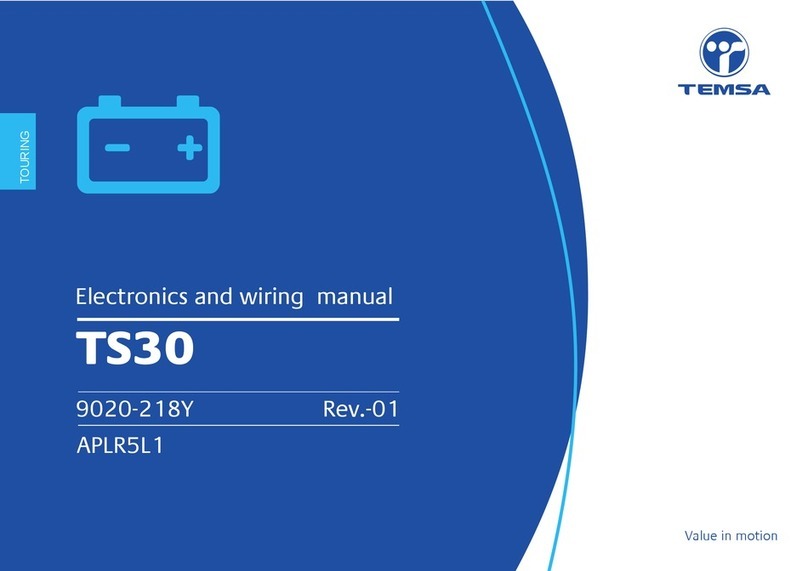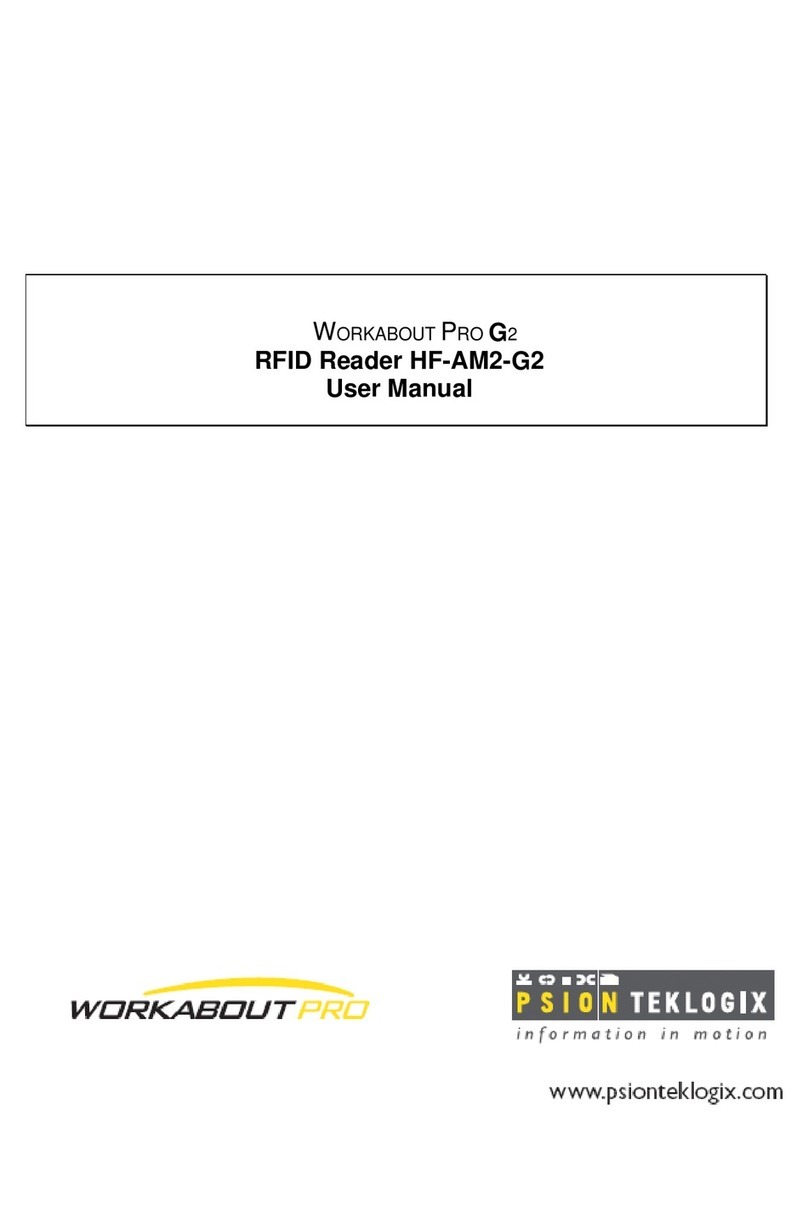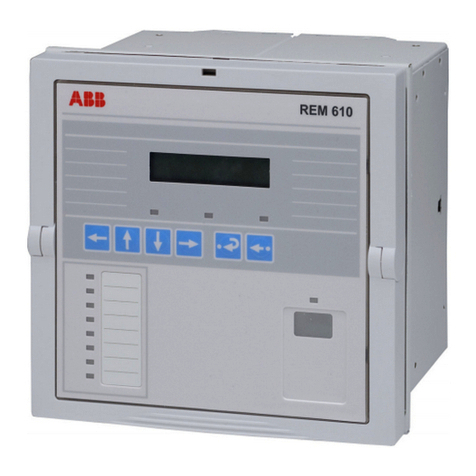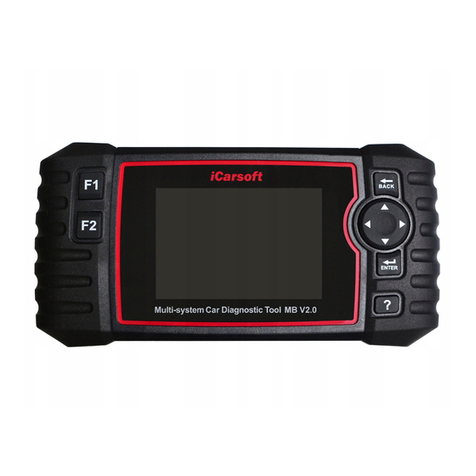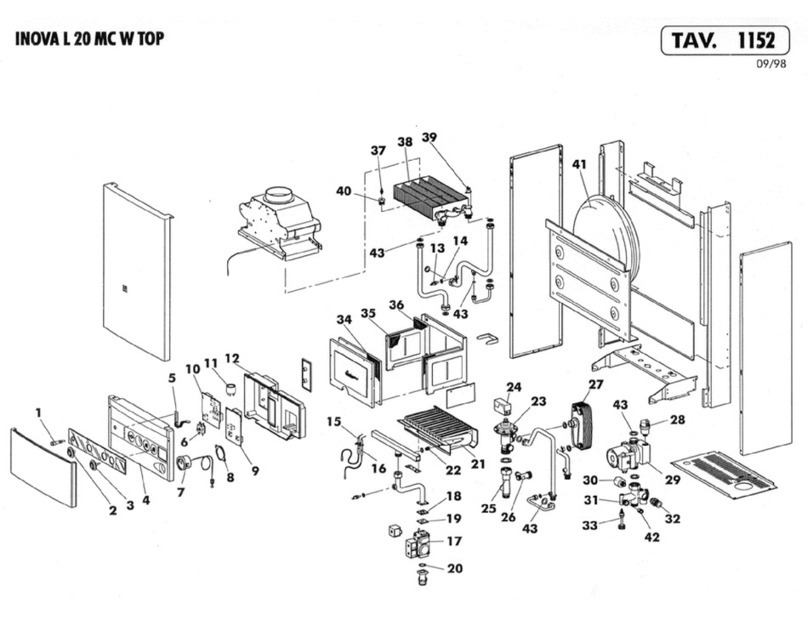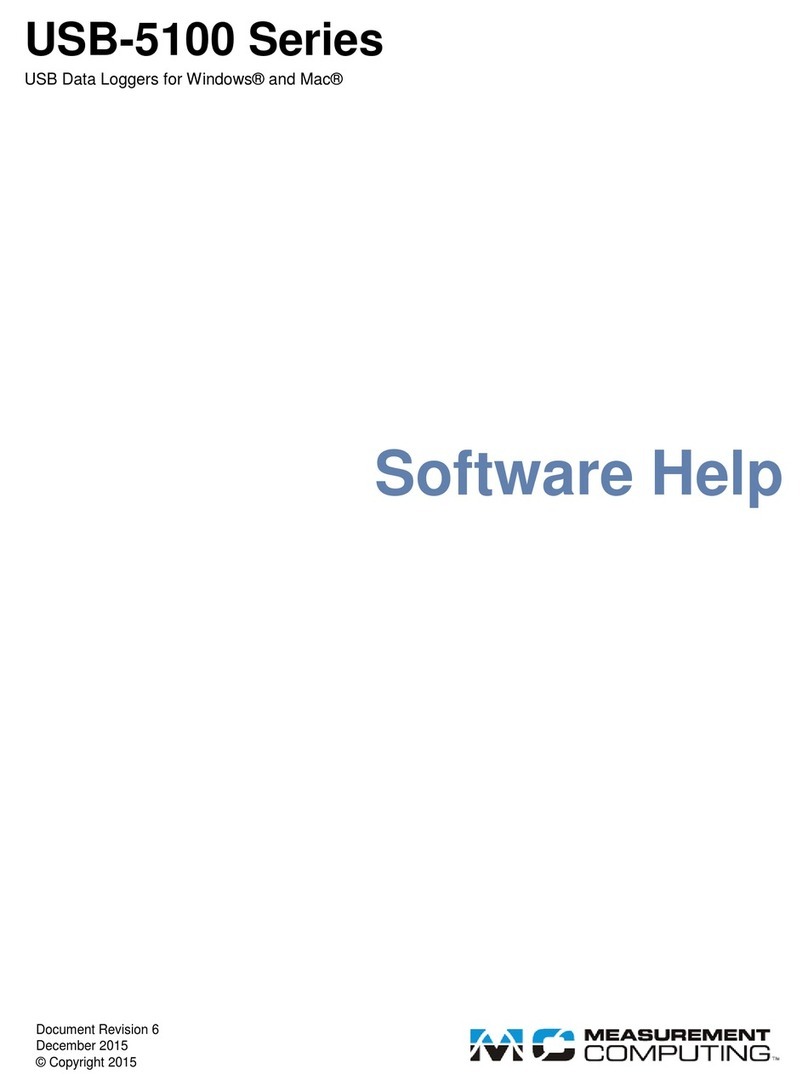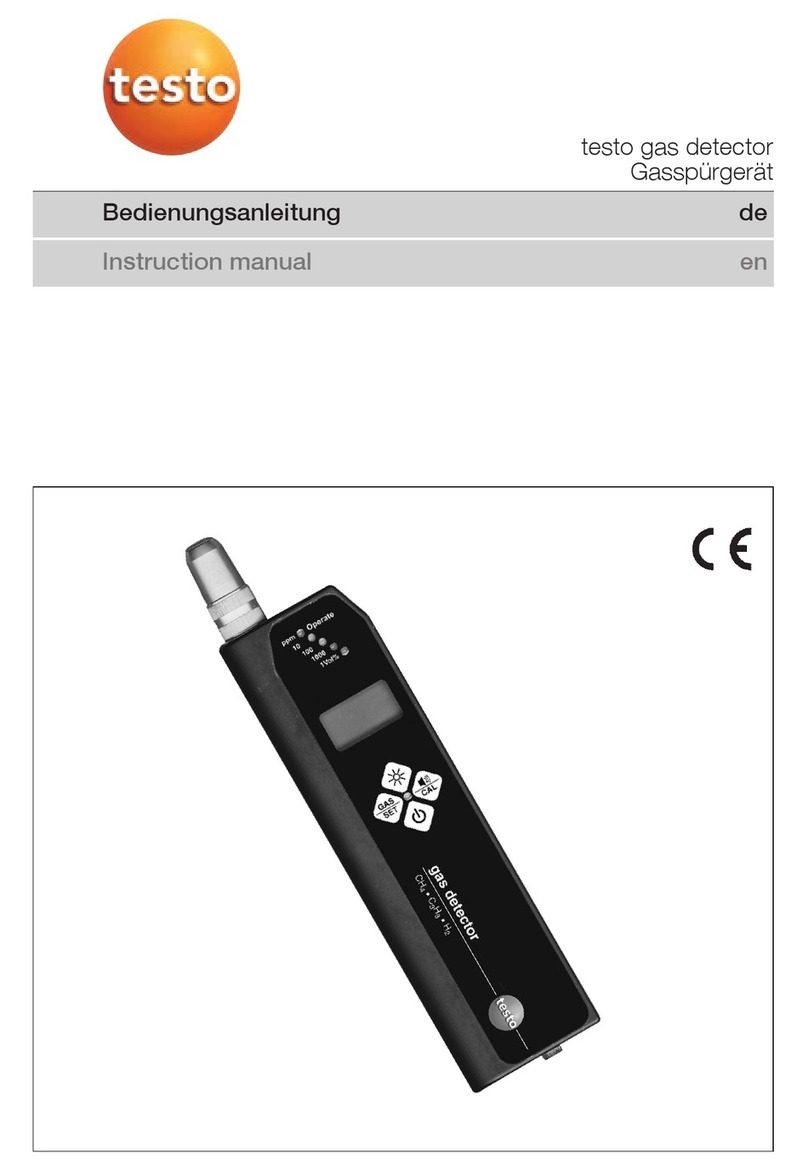SPX Hankison DHW 13 User manual

DHW Series
Pressure Swing Desiccant Compressed Air Dryer
Models 7 through 50 scfm
FORM NO.: 3215738 REVISION: 07/2014 READ AND UNDERSTAND THIS MANUAL PRIOR TO OPERATING OR SERVICING THIS PRODUCT.
INSTRUCTION MANUAL

2
Contents
1.0 GENERAL INFORMATION ............................................... 2
2.0 DESCRIPTION ................................................................ 3
3.0 INSTALLATION................................................................ 4
4.0 OPERATION ................................................................... 7
5.0 MAINTENANCE.............................................................. 9
WARRANTY .......................................................................... 11
IMPORTANT
READ PRIOR TO STARTING THIS EQUIPMENT
UNPACKING
This shipment has been thoroughly checked, packed and
inspected before leaving our plant. It was received in good
condition by the carrier and was so acknowledged.
1) Check for Visible Loss or Damage. If this shipment shows
evidence of loss or damage at time of delivery to you,
insist that a notation of this loss or damage be made on
the delivery receipt by the carrier’s agent.
2) Check for Concealed Loss or Damage. When a shipment
has been delivered to you in apparent good order, but
concealed damage is found upon unpacking, notify the
carrier immediately and insist on his agent inspecting
the shipment. Fifteen days from receipt of shipment is
the maximum time limit for requesting such inspection.
Concealed damage claims are not our responsibility as our
terms are F.O.B. point of shipment.
1.0 General Information
CAUTION
A. Pressurized devices-
This equipment is a pressure containing device.
• Donotexceedmaximumoperatingpressureasshown
on equipment serial number tag.
• Makesureequipmentisdepressurizedbeforeworking
on or disassembling it for servicing.
B. Electrical-
This equipment requires electricity to operate.
• Installequipmentincompliancewithnationalandlocal
electrical codes.
C. Breathing air-
• Airtreatedbythisequipmentmaynotbesuitablefor
breathing without further purification. Refer to OSHA
standard 1910.134 or other applicable standards for
the requirements for breathing quality air.

3
2.0 Description
2.1 Function
Dual tower regenerative desiccant dryers are utilized to dry
compressed air to dew points below the freezing point of
water or reduce the moisture content to low levels for use in
critical process applications.
Air is dried by using two identical towers, each containing a
desiccant bed. While one tower is on-stream drying the com-
pressed air, the other tower is off-stream being regenerated
(reactivated, i.e., dried out).
Desiccant dryers lower the dew point by adsorbing most of
the water vapor present onto the surface of the desiccant.
Adsorption occurs until an equilibrium is reached between
the partial pressure of the water vapor in the air and that on
the surface of the desiccant.
Desiccant can then be regenerated by desorbing the water
collected on its surface. Regeneration occurs by expanding
a portion of the dried air to atmospheric pressure. This very
dry air (called purge air) causes the moisture to desorb from
the desiccant and then carries the desorbed water out of the
dryer.
2.2 Operation
Compressed air enters the dryer and is directed to TOWER 1
through valve (A) and then exits the dryer through shuttle
valve (B). A portion of the dried air is throttled to near atmo-
spheric pressure by means of an orifice (C). This extremely
dry, low pressure air flows through and regenerates the
desiccant in TOWER 2 and is then exhausted through purge/
repressurization valve (D) and exhaust muffler (E) to atmo-
sphere.
After a set time, the automatic solid state timer closes
purge/repressurization valve (D) allowing TOWER 2 to repres-
surize slowly.
At the end of 2 minutes, valve (F) opens and Tower 1 depres-
surizes. The main air flow is now dried by TOWER 2 while
TOWER 1 is regenerated.
TOWER
1
TOWER
2
E
D
F
C
B
A
TOWER
1
TOWER
2
A
FD
E
B
C
Figure 1 – Flow Schematic
Models 7 through 50
2.3 Air By-Pass Assembly
An optional air by-pass assembly is available for all models.
When ordered with the dryer, the by-pass assembly is factory
installed inside the dryer cabinet. Make sure the by-pass
assembly is in the desired mode: "Dry" (compressed air flow
through the dryer) or "By-pass" (compressed air by-passes
the dryer).
2.3.1 Models 7 and 13
The by-pass assembly includes a by-pass valve with a manu-
ally operated spool. One end of the spool is marked "Push
to Dry" and the other end is marked "Push to Bypass". To
select the desired mode, remove the locking pin, push and
fully depress the appropriately marked end of the spool, and
install the locking pin in the opposite end.
IN
OUT
Push to by-pass dryer
Locking Pin
Push to Dry
Models 7 and 13
Optional by-pass
Figure 2a – Air Bypass Assembly
Models 7 and 13
2.3.2 Models 20, 25, 30, 35, and 50
The by-pass assembly includes two manually operated three-
way valves. To select "Dry" mode, rotate the valve handles
so that the arrows point away from each other. To select
"By-Pass" mode, rotate the valve handles so that the arrows
point toward each other.
Dry Mode
By-Pass Mode
Figure 2b – Air Bypass Assembly
Models 20 through 50

4
3.0 Installation
3.1 Dimensions, Connections, Weight
Maximum Operating Pressure:
150 psig, 10.5 kgf/cm2
Maximum Operating Temperature:
120°F, 49°C
MODEL
NUMBER
DIMENSIONS in (mm) CONNECTIONS WEIGHT
lb (kg)
A B C D E F H J K M INLET OUTLET
7
13
20
25
30
35
50
31.09 (790)
31.09 (790)
31.09 (790)
37.94 (964)
37.94 (964)
37.94 (964)
37.94 (964)
17.52 (445)
17.52 (445)
17.52 (445)
24.37 (619)
24.37 (619)
24.37 (619)
24.37 (619)
1.15 (29)
1.15 (29)
1.15 (29)
1.68 (43)
1.68 (43)
1.68 (43)
1.68 (43)
15.23 (387)
15.23 (387)
15.23 (387)
21 (533)
21 (533)
21 (533)
21 (533)
6.69 (170)
6.69 (170)
6.69 (170)
8.54 (217)
8.54 (217)
8.54 (217)
8.54 (217)
3.74 (95)
3.74 (95)
3.74 (95)
6.73 (171)
6.73 (171)
6.73 (171)
6.73 (171)
30.5 (775)
30.5 (775)
30.5 (775)
31.6 (803)
31.6 (803)
31.6 (803)
43.3 (1100)
3.74 (95)
3.74 (95)
3.74 (95)
4.25 (108)
4.25 (108)
4.25 (108)
4.25 (108)
5.31 (135)
5.31 (135)
5.31 (135)
6.22 (158)
6.22 (158)
6.22 (158)
6.22 (158)
27.5 (699)
27.5 (699)
27.5 (699)
27.5 (699)
27.5 (699)
27.5 (699)
39.3 (998)
1/2" NPT (F)
1/2" NPT (F)
1/2" NPT (F)
1/2" NPT (F)
1/2" NPT (F)
1/2" NPT (F)
1/2" NPT (F)
1/2" NPT (F)
1/2" NPT (F)
1/2" NPT (F)
1/2" NPT (F)
1/2" NPT (F)
1/2" NPT (F)
1/2" NPT (F)
55 (25)
60 (27)
71 (32)
93 (42)
93 (42)
99 (45)
132 (60)
SEE MOUNTING
SLOT DETAIL
6' POWER CORD
(SEE NOTE 1)
ELECTRICAL ENTRY
ON/OFF
SWITCH
TOWER
INDICATING
LIGHTS
BACK OF ENCLOSURE
MOUNTING SLOT DETAIL
PURGE
MUFFLER
1/4" R.
5/8"
1.69
(43)
1/8" R.
FIELD MOUNTED
PREFILTER
INLET
FIELD MOUNTED
AFTERFILTER
OUTLET
AIR INLET
H
M
E
F
2.46
(62.5)
INSTRUCTION
TAG
C D
B
A
SERIAL
NO.
TAG
(INSIDE
COVER)
FJ
2.36
(60)
K2.36
(60)
AUTOMATIC DRAIN
DIFFERENTIAL PRESSURE
INDICATOR
P1
P2
Figure 3 Dimensional Drawing
NOTE:
1. Dimension "A" applies only to units equipped
with optional prefilter and afterfilter package.
Specific dimensions of filters available upon
request.
2. Connection sizes valid with or without filters.
3. Weight applies to unit only, add 6-1/2 lbs.
(3 kg) to weight for optional filter package
when specified.

5
3.2 Electrical Specifications
MODEL WATTS
7
13
20
25
30
35
50
27.5
27.5
27.5
31.8
31.8
33.0
17.0
FG S2 A2 FG S1 A2 FG AC1 AC2
SOL.1
SOL.2
SOL.1 OUT
SOL.2 OUT
MAIN POWER
PCB
SW1
GROUND
G
1
2
3
4
G
L1
L2
ELECTRICAL
CONNECTION
L1 L2 E
LEGEND
All Models SOL 1 Left Purge Valve
SOL 2 Right Purge Valve
All Models SW1 On/Off Switch
Figure 4 Electrical Hook-up
3.3 Dryer Location in a Compressed Air System
NOTE: Air Compressor should be adequately sized to handle
air system demands as well as purge loss. Failure to take
this into account could result in overloading air compressors
and/or insufficient air supply downstream.
NOTE: It is desirable to install dryer where compressed
air is at the lowest possible temperature (downstream of
aftercoolers) and the highest possible pressure (upstream of
pressure reducing valves) without exceeding the maximum
working pressure.
A. Aftercooler/separator - Compressed air entering dryer
must be cooled to at least 120°F (49°C). Use aftercooler
and separator if higher temperatures are present.
A12 12C
DESICCANT
DRYER
COMPRESSOR
AFTERCOOLER
SEPARATOR
A
BD
PREFILTERS AFTERFILTERS
NOTE: Installation of a refrigerated dryer ahead of a pres-
sure-swing desiccant dryer does not increase desiccant
dryer capacity or reduce purge flow requirements. How-
ever, if necessary, a cooling unit can be installed ahead of
the desiccant dryer to reduce the inlet air temperature to
the dryer, producing a correspondingly lower outlet dew
point.
B. Prefilters - Adequate filtration is required upstream of
the dryer in order to protect the desiccant bed from
contamination. The following filters are recommended:
1. Air Line Filter - On compressed air systems utiliz-
ing non-lubricated (oil-free) air compressors, use to
protect desiccant bed from solid and liquid contami-
nation. On systems with lubricated compressors, if
bulk liquid is present, use as a prefilter ahead of the oil
aerosol removal filter.
2. Oil Aerosol Removal Filter - On systems with lubri-
cated compressors, use to remove oil aerosols and
protect desiccant bed from oil contamination.
C. Desiccant dryer

6
Figure 5
PREFILTER AFTERFILTER
NIPPLE NIPPLE
MUFFLER
From
Compressor
To Downstream
Air Lines
P1
P2
D. Afterfilters - To ensure downstream air purity (prevent
desiccant dust from traveling downstream) adequate
filtration down-stream of the dryer is required. De-
pending on the degree of purity you require from your
compressed air system, the following filters are recom-
mended:
1. Air Line Filter - Use as an afterfilter to remove desic-
cant fines and protect downstream components from
solid particles 1 micron and larger. Filters for finer
solid particle filtration are available.
2. Oil Vapor Adsorber - Use as an afterfilter to remove
oil vapor and its subsequent taste and odor and to
protect downstream components from solid particles
0.01 micron and larger.
NOTE: By-pass lines and isolation valves are recom-
mended so that maintenance work can be performed
without shutting off the air supply.
IMPORTANT: The compressed air supply inlet should be
periodically checked to ensure that equipment design
specifications are not exceeded. Normally the compressor
installation includes intercoolers, aftercoolers, separators,
receivers, or similar equipment which adequately pretreat
the compressed air supply in order to avoid excessively high
air temperatures and liquid slugging of down-stream equip-
ment.
3.4 PreFilter and AfterFilter Installation
If supplied, install Prefilter and Afterfilter.
NOTE: When installing, hold bulkhead fitting on dryer with
wrench and thread filter on by hand.
A. Install prefilter (F04-HF-DG1) ahead (upstream) of dryer.
Use nipple supplied to connect filter to inlet port of dryer.
B. Install afterfilter (F04-PF-TG1) downstream of dryer. Use
nipple supplied to connect filter to outlet port of dryer.
NOTE: Observe arrows on differential pressure gauge to
ensure proper flow direction through filter.
3.5 Wall-mounting
Four holes are provided in rear of cabinet. Attach cabinet
to wall using four (4) screws. User is responsible for select-
ing screws of the appropriate strength and ensuring the wall
mounting surface can safely support the weight of the dryer
(See Section 3.1).
3.6 Piping
Connect air line from compressor to inlet of prefilter or
dryer. Connect downstream air line to outlet of afterfilter or
dryer.
3.7 Electrical connection
Check to see that power supply to dryer is the same as the
power requirements indicated on the identification label.
Install plug into receptacle of proper voltage or hardwire to
pigtails and ground screw inside cabinet.
3.8 Muffler Installation
Install muffler (packaged separately inside dryer shipping
box) to fitting on side of cabinet.
3.9 Moisture Indicator Installation
Install the moisture indicator (shipped separately inside
of cabinet) directly into the pipe line anywhere in air/gas
system where moisture level is to be monitored. If indica-
tor is installed parallel to main line, make sure enough of a
restriction exists in main line to force adequate flow through
indicator.
3.10 Initial desiccant charge
The dryer is shipped complete with desiccant and ready to
operate after piping and electrical connections are made.
CUSTOMER ASSEMBLY
INSTRUCTIONS
These instructions MUST be followed prior to mounting of
dryer enclosure.
1. Connect prefilter and afterfilter to enclosure (if
applicable).
2. Mount dryer.
3. Connect to inlet, outlet, and purge connections. (see
NOTE)
NOTE: If the equipment is to dry (or reactivate with) a gas
other than air, the outlets of the safety valve, reactivation
gas outlet line, blow down valves, etc. are to piped away
to a safe location (by purchaser). In piping away gas, do
not pipe upward without adequate arrangements to
prevent trapping condensation.
4. Install moisture indicator downstream of dryer outlet (if
applicable).

7
4.0 Operation
4.1 Start-up
A. During the initial start-up, slowly pressurize dryer to full
line pressure and check entire system for leaks. Depres-
surize and correct any leaks.
B. Energize the Dryer On-Off switch located on the enclo-
sure cover (Power-on light should illuminate).
NOTE: If dryer is installed with either internally or externally
mounted air by-pass valve, make certain that by-pass valve is
closed to prevent untreated air from flowing downstream.
4.2 Inlet, Purge, and Outlet Flows @ 100 psig
(7 kgf/cm2)
A. Inlet Flows
1. Maximum Inlet Flow at Rated Conditions
For maximum inlet flow at rated conditions refer to
Table 1.
TABLE 1 Inlet and Purge Flows @ 100 psig
MODEL INLET FLOW (1)
scfm (m3/h)
PURGE FLOW (2)
scfm (m3/h)
-40°F (-40°C) -100°F (-73°C) Average Maximum
7
13
20
25
30
35
50
7.3 (12)
13 (22)
20 (34)
25 (42)
30 (51)
35 (59)
50 (85)
5.6 (9.5)
10 (17)
16 (27)
20 (34)
24 (41)
28 (48)
40 (68)
1.5 (2.5)
2.7 (4.6)
4.2 (7.1)
5.1 (8.7)
6.2 (11)
7.2 (12)
10.2 (17)
2.0 (3.4)
3.7 (6.3)
5.5 (9.3)
6.8 (12)
8.2 (14)
9.6 (16)
13.6 (23)
1. Inlet flows are established in accordance with CAGI (Compressed Air and Gas Institute) standard ADF-200,
Dual Stage Regenerative Desiccant Compressed Air Dryers - Methods for Testing and Rating. Conditions
for rating dryers are: inlet pressure - 100 psig (7 kgf/cm2); inlet temperature - saturated at 100°F (38°C).
2. Average Purge Flow is the total amount of air used to purge and repressurize off-stream towers averaged
over the cycle time. Maximum Purge Flow is the flow rate through the off-stream tower during that portion
of the cycle the purge/repressurization valve is open.
TABLE 2 Capacity Correction Factor for various inlet pressures
INLET
PRESSURE
psig 50 60 70 80 90 100 110 120 130 140 150
kgf/cm23.5 4.2 4.9 5.6 6.3 7.0 7.7 8.4 9.1 9.8 10.5
Multiplier 0.31 0.42 0.54 0.73 0.83 1.00 1.09 1.17 1.26 1.35 1.44
TABLE 3 Capacity Correction Factor for various inlet temperatures
INLET
TEMPERATURE
°F 100 and below 105 110 115 120
°C 38 and below 41 43 46 49
Multiplier 1.00 0.98 0.96 0.93 0.89
TABLE 4 Purge Flow Correction Factor for various inlet pressures
INLET
PRESSURE
psig 50 60 70 80 90 100 110 120 130 140 150
kgf/cm23.5 4.2 4.9 5.6 6.3 7.0 7.7 8.4 9.1 9.8 10.5
Multiplier 0.55 0.64 0.73 0.82 0.91 1.00 1.09 1.17 1.26 1.35 1.44
TABLE 5 Outlet pressure dew points at Moisture Indicator color change
INLET TEMP. °F
(°C)
35
(2)
40
(4)
50
(10)
60
(16)
70
(21)
80
(27)
90
(32)
100
(38)
110
(43)
120
(49)
OUTLET P.D.P. °F
(°C)
-34
(-37)
-28
(-33)
-22
(-30)
-16
(-27)
-10
(-23)
-4
(-20)
3
(-16)
9
(-13)
15
(-9)
21
(-6)
2. Maximum inlet flow at various pressures
To determine maximum inlet flow at inlet pressures
other than 100 psig (7kgf/cm2), multiply inlet flow
from Table 1 by multiplier from Table 2 that corre-
sponds to system pressure at inlet of dryer.
3. Maximum inlet flow at various temperatures
To determine maximum inlet flow at inlet tempera-
tures other than 100°F (38°C), multiply inlet flow from
Table 1 by multiplier from Table 3 that corresponds to
system temperature at inlet of dryer.
B. Purge Flow
For maximum and average purge flows at 100 psig
(7 kgf/cm2) refer to Table 1.
1. Maximum Purge Flow
Maximum Purge Flow (MFP) is the amount of purge
flowing through the off-stream tower when the
purge/repressurization valve is open. After the purge/
repressurization valve closes, the purge flow will
gradually decrease as the off-stream tower repres-
surizes to line pressure. Refer to Table 1 for Maximum
Purge Flows at 100 psig (7kgf/cm2).

8
2. Average Purge Flow
The Average Purge Flow (APF) is the actual amount of
flow averaged over the entire purge/repressurization
cycle. It includes the maximum purge flow (MFP) for
a set amount of the purge/repressurization time and
the volume of air used for repressurization. Refer to
Table 1 for Average Purge Flows at 100 psig.
3. Purge flows at pressures other than 100 psig
To determine Maximum or Average Purge Flow at inlet
pressures other than 100 psig, multiply purge flow at
100 psig from Table 1 by the multiplier from Table 4
that corresponds to system pressure at inlet to dryer.
C. Outlet Air Flow
1. Minimum Outlet Flow
Determine minimum outlet flow available from dryer
by subtracting Maximum Purge Flow from inlet flow
to dryer.
NOTE: Air compressor should be adequately sized to
handle air system demands as well as purge loss. Fail-
ure to do so could result in overloading air compres-
sors and/or insufficient air supply downstream.
2. Average Outlet Flow
Determine average outlet flow available by subtracting
Average Purge Flow from inlet flow to dryer.
NOTE: Average outlet flow may be used to determine
available downstream air supply if a storage vessel (re-
ceiver tank) of sufficient volume is available between
dryer and point of air usage. Otherwise use 3.2.3.1 To
compute downstream air available.
EXAMPLE:
Find maximum inlet flow, maximum and average purge
flows, and minimum and average outlet flows for a 13 scfm
unit operated at 120 psig. Dryer will operate with an inlet air
flow of 14 scfm.
Step 1: Find Maximum Inlet Flow by multiplying
Maximum Inlet Flow at Rated Conditions from
Table 1 by Inlet Pressure Correction Factor from
Table 2 and Inlet Temperature Correction Factor
from Table 3: 13 x 1.17 x 1.00 = 15.2 scfm.
Step 2: Find Maximum Purge Flow by multiplying
Maximum Purge Flow at 100 psig from Table 1 by
Purge Flow Correction Factor from Table 4:
3.7 x 1.17 = 4.3 scfm, the maximum purge flow.
Step 3: Find Average Purge Flow by multiplying Average
Purge Flow at 100 psig from Table 1 by Purge Flow
Correction Factor from Table 4: 2.7 x 1.17= 3.2 scfm,
the average purge flow.
Step 4: Find Minimum Outlet Flow available by subtracting
Maximum Purge Flow (Step 2) from inlet flow of
14 scfm: 14 - 4.3 = 9.7 scfm.
Step 5: Find Average Outlet Flow available by subtracting
Average Purge Flow (Step 3) from inlet flow of
14 scfm: 14 - 3.2 = 10.8 scfm.
4.3 Operating Conditions
A. Maximum Working Pressure: 150 psig (10.5 kgf/cm2)
B. Minimum Working Pressure: 50 psig (3.5 kgf/cm2)
It is recommended that the air dryer be operated at the
highest available pressure not exceeding the maximum
working pressure since the dryer capacity increases and %
of purge air decreases at higher pressures.
C. Maximum Operating Temperature: 120°F (49°C)
4.4 Operational Check Points
A. Check periodically that there is power to the unit - Power
on light is on.
B. If unit is equipped with optional moisture indicator, check
at least once a day. Outlet relative humidity of the desic-
cant dryer is indicated by the color change humidity indi-
cator. Green indicates R.H. below 3% and yellow indicates
R.H. above 3%. Table 5 indicates outlet dew point when
moisture indicator changes from green to yellow at vari-
ous inlet temperatures. During startup the indicator may
be yellow, however, it should begin to change to green
within 4 hours.
C. If supplied with optional prefilter/afterfilter. Check that
indicators are in green area. If indicator is in red area ele-
ment replacement is necessary.
4.5 Dryer Shutdown
To shut down the dryer, de-energize using the on-off switch
(Power-on light extinguished). Unit will remain pressurized.
4.6 Depressurization
To depressurize unit
A. Open by-pass valve (if one is installed) and close inlet and
outlet valves.
B. Run timer through a complete tower change cycle or
until all air has been exhausted from the dryer.
4 MINUTE CYCLE TIMING CHART
Cycle Time (min:sec)
0:00 - 0:30 0:30 - 2.00 2:00 - 2:30 2:30 - 4:00
All
Models
SOL1 Left Purge Valve Closed Closed Closed Open
SOL2 Right Purge Valve Closed Open Closed Closed
All
Models
LED Left Tower Flashing On Flashing Off
LED Right Tower Flashing Off Flashing On

9
5.0 Maintenance
CAUTION: The heatless desiccant dryer is a pressure contain-
ing device. Depressurize before servicing. (See section 4.6.)
5.1 Desiccant Replacement
IMPORTANT: The use of the correct replacement desiccant
is necessary for proper drying operation. Never use hygro-
scopic salts of the type commonly used in “deliquescent”
type dryers.
A. Frequency of Desiccant Replacement - Desiccant should
be replaced whenever the required dew point cannot be
maintained while the dryer is being operated within its
design conditions and there are no mechanical malfunc-
tions.
NOTE: Desiccant life is determined by the quality of the
inlet air. Proper filtering of the inlet air will extend the life
of the desiccant.
B. Procedure for Desiccant Replacement
1. Depressurize and de-energize the dryer.
2. Remove front panel from cabinet.
3. Disconnect tubing from top and bottom of desic-
cant towers and unscrew strainer assemblies. Remove
the mounting screws from the outlet shuttle valve
mounting bracket to aid in disconnecting the tubing
at the top of the towers.
NOTE: Be prepared to catch the desiccant being
removed in a container. Desiccant will readily pour out
when bottom strainer is removed.
4. Allow the spent desiccant to drain from the towers.
5. Replace bottom strainer assemblies.
6. Fill the desiccant drying towers as full as possible with
dry desiccant.
7. Replace top strainer assemblies.
8. Reinstall tubing to top and bottom of desiccant
towers.
C. Ensuring Desiccant Dryness
1. Replacement desiccant is shipped in air tight contain-
ers. Keep containers closed until use to avoid mois-
ture contamination. If desiccant is exposed to air it can
be heated in an oven at 400°F for four hours before
use, or the next procedure can be used.
2. If the dryer is not refilled with dry desiccant, it will be
necessary to operate the dryer on 100% purge for ap-
proximately twenty-four hours to dry the desiccant.
Amount of desiccant required for complete change
MODEL DESICCANT REQUIRED
lb (kg)
7
13
20
25
30
35
50
7
12.8
19.4
28.7
28.7
33.6
47.6
(3.2)
(5.8)
(8.8)
(13.0)
(13.0)
(15.2)
(21.6)
5.2 Prefilter/Afterfilter Maintenance
A. Element Replacement
1. For maximum filtration efficiency, replace element an-
nually or when pressure drop reaches 4.3 psi (0.3 bar)
(indicator in red area), whichever occurs first.
B. Procedure for Element Replacement
WARNING: THIS FILTER IS A PRESSURE CONTAINING DEVICE.
DEPRESSURIZE BEFORE SERVICING.
1. Isolate filter (close inlet and outlet valves if installed) or
shut off air supply.
2. Depressurize filter by slowly opening manual drain
valve.
3. Remove bowl by unscrewing the bowl from the filter
head using hand, strap wrench or C spanner, and pull-
ing bowl straight down.
4. Clean filter bowl.
5. Replacing complete element.
a) Pull off old element and discard.
b) Make certain that the old and new element have
the same part number and the end caps are the
same color.
c) Wipe the wall inside the filter head to remove any
dirt.
d) Lubricate the new element o-ring on the element
top cap.
e) Align the slot in the element top cap with the pro-
jection inside the filter head.
Figure 6
f) Insert the element into the head making sure the
element slot and the projection inside the filter
head remain aligned.
NOTE: Handle all elements by bottom end cap only.
Projection
Element Slot
O-Ring

10
5.3 Repair Parts MODEL
7 13 20 25 30 35 50
STRAINER (TOP & BOTTOM) 3209715 3209715 3209715 3209716 3209716 3209716 3209716
SHUTTLE VALVE BODY (OUTLET VALVE) 3244971 3244972 3244973 3244974 3244975 3244976 3244977
SHUTTLE (OUTLET VALVE) 3244978 3244979 3244980 3244981 3244982 3244983 3244984
SHUTTLE VALVE BODY (INLET VALVE) 7433646 7433646 7433647 7433647 7433647 7433647 3247592
SHUTTLE (INLET VALVE) 7433648 7433648 7433649 7433649 7433649 7433649 3247593
SWITCH (ON/OFF) 3245021 3245021 3245021 3245021 3245021 3245021 3245021
CONTROLS TIMER 115V 3247594 3247594 3247594 3247594 3247594 3247594 3247594
CONTROLS TIMER 230V 3247595 3247595 3247595 3247595 3247595 3247595 3247595
PURGE/REPRESSURIZATION VALVE 115V 3209763 3209763 3209764 3209764 3209764 3209764 3247596
PURGE/REPRESSURIZATION VALVE 230V 3209765 3209765 3209766 3209766 3209766 3209766 3247597
MAINTENANCE KIT*
Dryers Made After September 19, 2011 DHWJMKTA DHWJMKTB DHWJMKTC DHWJMKTD DHWJMKTD DHWJMKTE DHWJMKTF
Dryers Made Before September 19, 2011 DHWJMKT1 DHWJMKT2 DHWJMKT3 DHWJMKT4 DHWJMKT5 DHWJMKT6 DHWJMKT7
*MAINTENANCE KITS INCLUDES MUFFLER, CONDENSATE DRAIN, PREFILTER ELEMENT, AFTERFILTER ELEMENT, FILTER O-RINGS (2), DESICCANT
6. Replace housing o-ring (located at the top of the filter
bowl) if needed. Make certain o-ring is generously
lubricated (Use lubricant provided).
7. Reassemble bowl to head.
NOTE: Threaded bowl to head connection, generously
lubricate threads with a high grade/temperature lubri-
cant 150°F (66°C). (Use lubricant provided)
C. Auto Drain MechanismReplacement
Prefilter only: It is recommended that drain mechanism be
replaced annually.

11
SERVICE DEPARTMENT : (724) 746-1100
WARRANTY
The manufacturer warrants the product manufactured by it, when properly installed, operated, applied, and maintained in
accordance with procedures and recommendations outlined in manufacturer’s instruction manuals, to be free from defects in
material or workmanship for a period of one (1) year from the date of shipment to the buyer by the manufacturer or manufacturer’s
authorized distributor, or eighteen months from the date of shipment from the factory, whichever occurs first, provided such de-
fect is discovered and brought to the manufacturer’s attention within the aforesaid warranty period. The manufacturer will repair
or replace any product or part determined to be defective by the manufacturer within the warranty period, provided such defect
occurred in normal service and not as a result of misuse, abuse, neglect or accident.
The warranty covers parts and labor for the warranty period. Repair or replacement shall be made at the factory or the instal-
lation site, at the sole option of the manufacturer. Any service performed on the product by anyone other than the manufacturer
must first be authorized by the manufacturer. Normal maintenance items requiring routine replacement are not warranted. Unau-
thorized service voids the warranty and any resulting charge or subsequent claim will not be paid. Products repaired or replaced
under warranty shall be warranted for the unexpired portion of the warranty applying to the original product. The foregoing is the
exclusive remedy of any buyer of the manufacturer’s product. The maximum damages liability of the manufacturer is the original
purchase price of the product or part.
THE FOREGOING WARRANTY IS EXCLUSIVE AND IN LIEU OF ALL OTHER WARRANTIES, WHETHER WRITTEN,
ORAL, OR STATUTORY, AND IS EXPRESSED IN LIEU OF THE IMPLIED WARRANTY OF MERCHANTABILITY AND THE
IMPLIED WARRANTY OF FITNESS FOR A PARTICULAR PURPOSE. THE MANUFACTURER SHALL NOT BE LIABLE FOR
LOSS OR DAMAGE BY REASON OF STRICT LIABILITY IN TORT OR ITS NEGLIGENCE IN WHATEVER MANNER INCLUD-
ING DESIGN, MANUFACTURE OR INSPECTION OF THE EQUIPMENT OR ITS FAILURE TO DISCOVER, REPORT, REPAIR,
OR MODIFY LATENT DEFECTS INHERENT THEREIN. THE MANUFACTURER, HIS REPRESENTATIVE OR DISTRIBUTOR
SHALL NOT BE LIABLE FOR LOSS OF USE OF THE PRODUCT OR OTHER INCIDENTAL OR CONSEQUENTIAL COSTS,
EXPENSES, OR DAMAGES INCURRED BY THE BUYER, WHETHER ARISING FROM BREACH OF WARRANTY, NEGLI-
GENCE OR STRICT LIABILITY IN TORT.
The manufacturer does not warrant any product, part, material, component, or accessory manufactured by others
and sold or supplied in connection with the sale of manufacturer’s products.
AUTHORIZATION FROM THE SERVICE DEPARTMENT IS NECESSARY BEFORE MATERIAL IS RETURNED TO THE FACTORY OR
IN-WARRANTY REPAIRS ARE MADE.

SPX
1000 Philadelphia Street
Canonsburg, PA 15317-1700 U.S.A.
P: (724) 745-1555
F: (724) 745-6040
www.spx.com/hankison
Improvements and research are continuous at SPX.
Specifications may change without notice.
ISSUED 07/2014 Form No.: 3215738 Revision: G
COPYRIGHT ©2014 SPX Corporation
DHW SERIES
Pressure Swing Desiccant
Compressed Air Dryer
Models 7 through 50 scfm
This manual suits for next models
6
Table of contents



